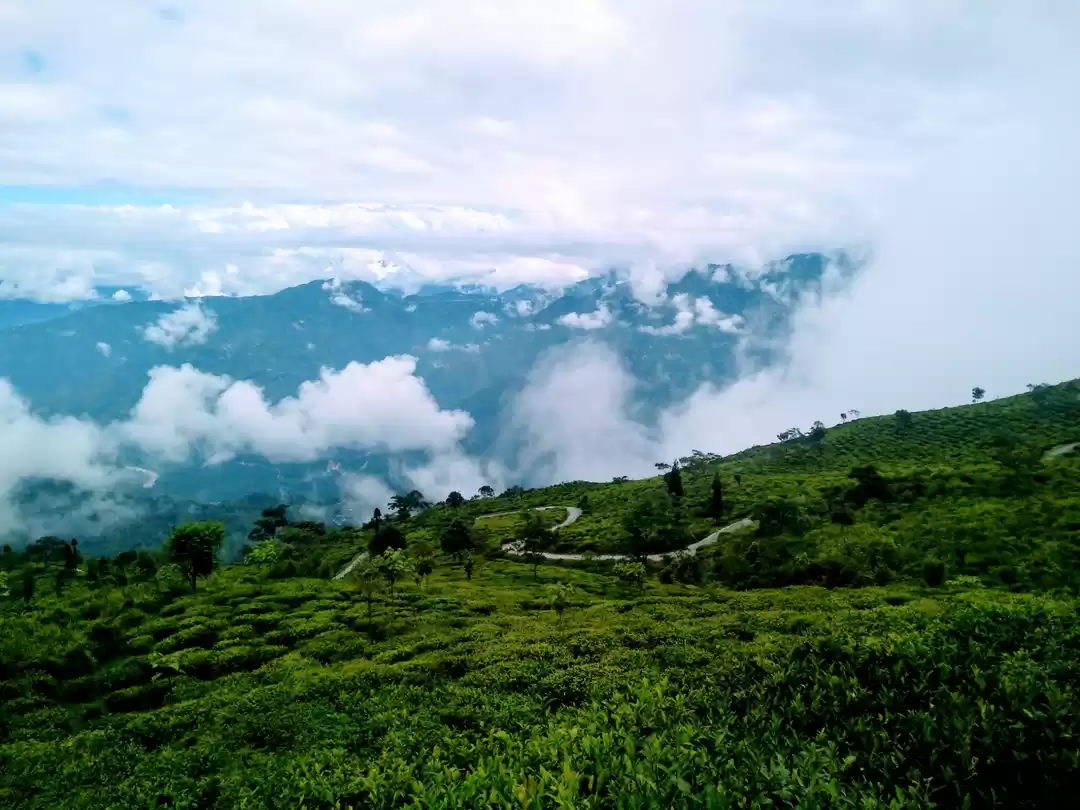
For those of us who live in the plains, clouds are just pretty formations in the sky -- white and fluffy on a good day, dark and thunderous on a rainy one. But feeling those clouds is a different matter altogether. My maiden trip to Darjeeling in the month of September, a time of full on monsoons, gave me an experience that I am not likely to forget anytime soon. The Himalayas are always beautiful, but during monsoons they are ethereal.


Darjeeling, a Himalayan hill station located in West Bengal, can be accessed both by train and flight. The town does not have an airport of its own, but from Siliguri Bagdogra aiport it takes only 30-40 mins in a car/bus. From NJP railway station, the journey is a bit longer – about 3 hours uphill, less coming down. But the experience is far more exhilarating I believe. From the heat of the plains, the gradual ascent to the heights surrounded by clouds, ample greenery and a priceless view make the journey a trip in itself. You can also book the toy train to Darjeeling station, but the train is available only during the tourist season. So, make your plans accordingly.

We arrived in NJP station via Darjeeling Mail. The scheduled time of arrival was 8 am, but our train was delayed over 2 hours. NJP is a pretty bustling station, with tourists arriving every hour. There are a number of taxi stands, bus stands, restaurants. As soon as we stepped out of the train, travel agents, drivers flocked us and started bargaining about the fares. A small tip here: some agents will offer you packages -- the trip to a fro Darjeeling and to some attraction points. These packages are exorbitantly overpriced, so DO NOT sign up for these. You will find a lot of taxis in the hill station itself.
Darjeeling, a Himalayan hill station located in West Bengal, can be accessed both by train and flight. The town does not have an airport of its own, but from Siliguri Bagdogra aiport it takes only 30-40 mins in a car/bus. From NJP railway station, the journey is a bit longer – about 3 hours uphill, less coming down. But the experience is far more exhilarating I believe. From the heat of the plains, the gradual ascent to the heights surrounded by clouds, ample greenery and a priceless view make the journey a trip in itself. You can also book the toy train to Darjeeling station, but the train is available only during the tourist season. So, make your plans accordingly.
Since September is an off season, we got our own car at Rs 1800 one way, which was pretty reasonable compared to the tourist season, when the rate goes up to 3000.
The flat lands giving way to the mountains was an amazing experience. The roads are mostly winding, so some people may be motion sick. Hence, it is advisable to carry some medicines — just in case.
We got a lot of rains and fog on the way. In fact sometimes the visibility was so poor that it was pretty scary. Our driver was an expert though – deftly maneuvering the car without breaking a sweat. The scare factor aside, I was completely in awe of the mountains.


We reached Darjeeling in a little over 3 hours. As you enter the city, it looks a bit cramped up at first. Too many houses built too close together. But as you gradually move in deeper, the overcrowded city will start casting a spell on you. From the weather to the view to the overall mood of the city will force you to relax.

Day 1
We had booked Old Bellevue on the Ridge located just on the Mall. Because it was an off season, we managed to get a great deal. The hotel is a heritage building with excellent rooms and view. The staff is friendly and courteous. The only problem with the hotel is accessibility. Since it’s located on the mall, where no tourist cars or taxis are allowed, we had to walk quite a long way to reach it. Also there were good many stairs, which, with luggage is a pretty daunting task.
The physical exertion aside, I fell in love with the hotel at first sight. With colonial architecture, it has this certain old world charm to it. Our room was on the first floor with a supposedly excellent view of Kanchenjunga. But since the day was so foggy, all we saw was a blank canvas of white clouds, waiting for the splash of colour that lay beyond.
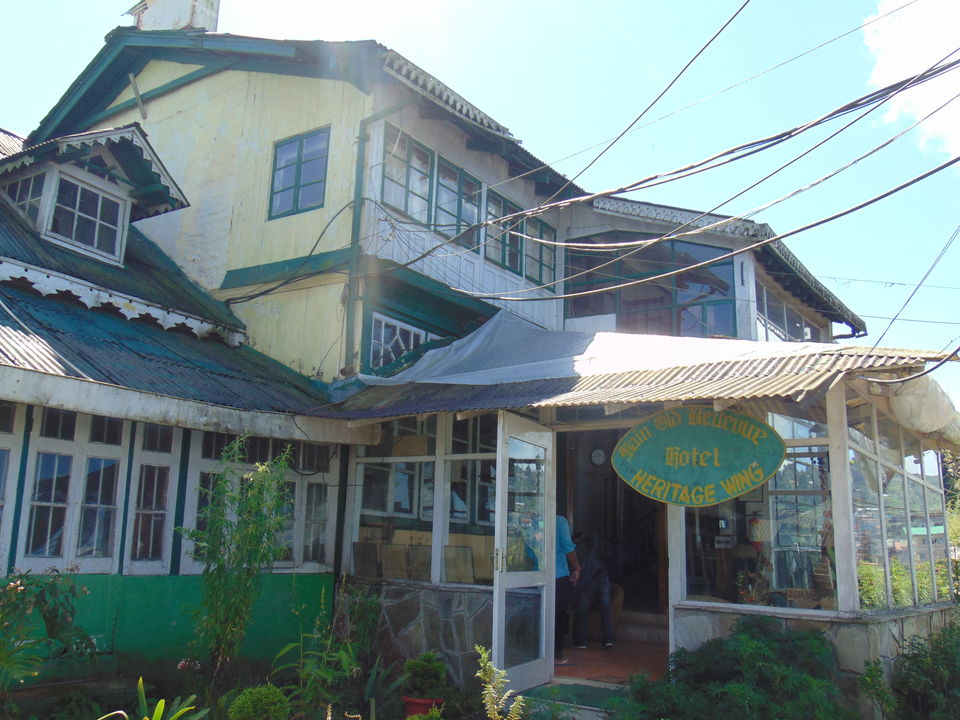

We had lunch at the legendary Glenary’s, which is as cozy and luxurious as the reviews say. We had some excellent pasta and roast chicken. The food was delicious and the quantity substantial. That evening it started raining again, and it was pretty cold. We enjoyed hot tea again at Gleanry’s, ate a light dinner and retired early.


Day 2
Our second day in Darjeeling was an eventful one. After having a light breakfast at our hotel, we went in search of a taxi to see the local attractions, commonly known as the 7 points. After a bit of bargaining, the rate was set at 1000 rupees (the rates will be higher during the tourist season). These points include the Padmaja Nehru zoo, Himalayan Mountaineering Institute (HMI), tea garden, Tibetan Refugee Center, Tenzing Rock & ropeway, Japanese Temple, Peace Pagoda.
Padmaja Nehru Zoo & HMI: These two share borders, so you can get to see both places at one go. The zoo is spread over a sprawling area, which goes uphill and downhill. Hence, it can be exhausting covering the entire thing. The collection of animals is impressive. Many are enclosed in open spaces, so one can get an idea about their natural habitat. I was really impressed with the variety of tigers at the zoo (inside solid cages thankfully). There are leopards, snow leopards, black panthers, white tigers, Royal Bengal tigers and many more. For non-mountaineers HMI might not hold much attraction apart from a trekking museum, which essentially displays trekking gears and taxidermy of some Himalayan fauna. Truthfully, it’s not that impressive. However, for the aspiring mountaineers there is an indoor wall climbing facility, complete with harness and a trainer. It looked fun, but we did not give it a try.




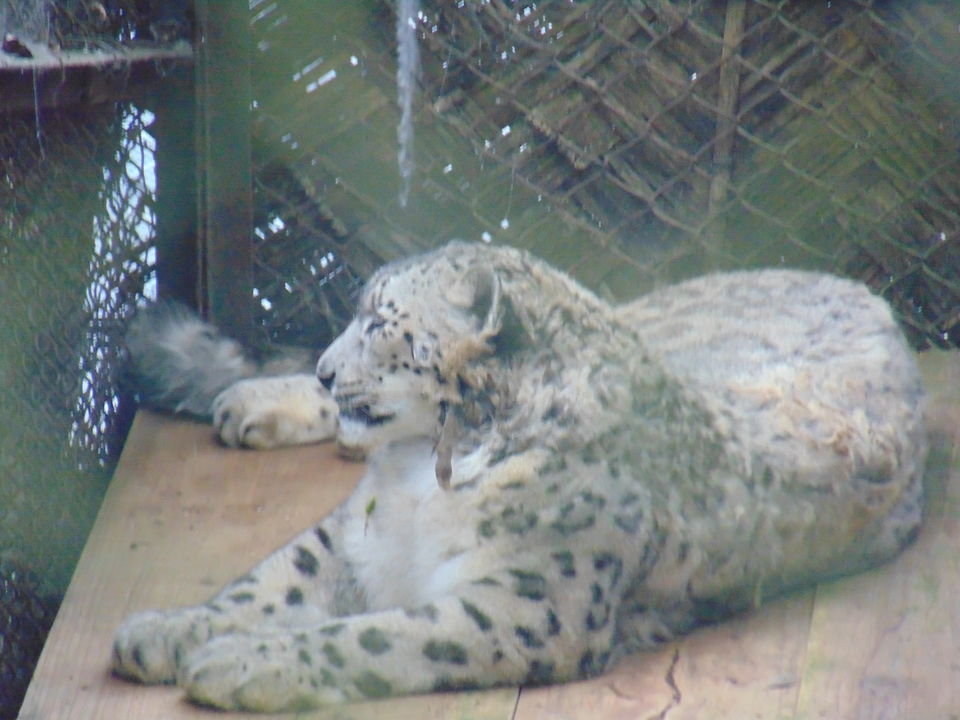

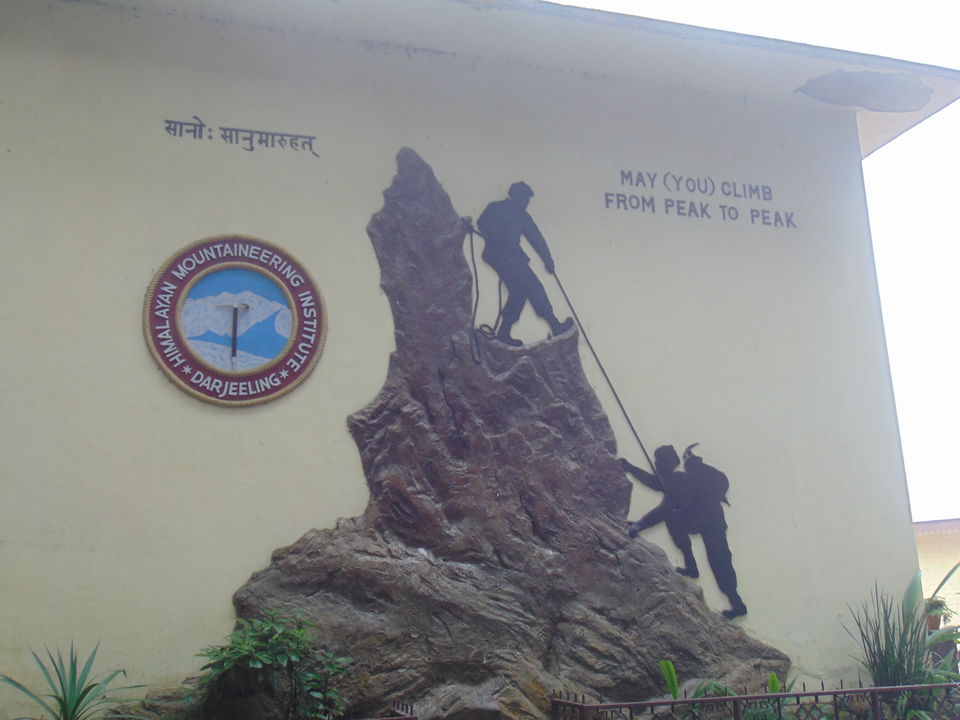
Tea Garden: The driver took us to a random tea garden, which was pretty small with limited accessibility. The mist shrouded view was splendid not doubt, but it was not a tea garden I had built up in my mind.

Tibetan Self-Help Refugee Center: You cannot miss this historical place if you are at Darjeeling. Spread over around 4 acres, the center houses various handicraft sections run by Tibetans. In an era of modern machines, watching the expert craftsmen dressed in their traditional garb sew, stitch with old world equipment, is a different experience altogether. The merchandise is available for sale at a store located within the center. You can buy purses, bags, gloves, ladies’ jacket, home décor items at very reasonable price.

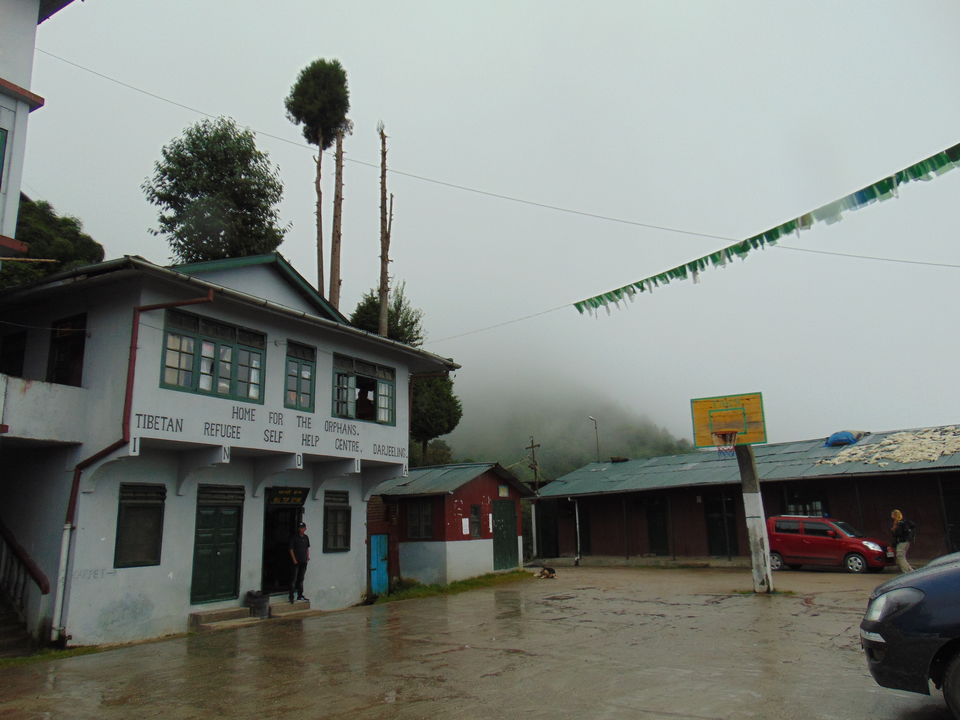
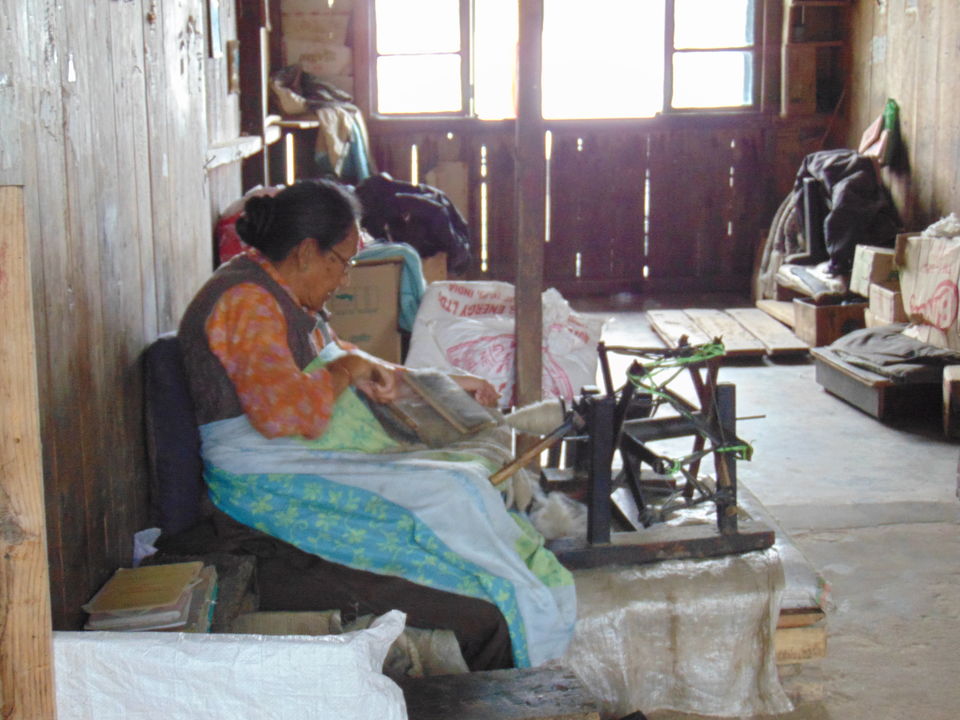




The center also has an exhibition hall with black and white pictures of the early settlement. If you are interested in knowing more about the history of the place, a visit to this exhibition is a must.
Peace Pagoda & Japanese Temple: They are located inside the same compound, walking distance from each other. The Japanese temple is a beautiful two-storeyed building where you can get a glimpse of the Japanese worship rituals. The prayer room is on the first floor where the priest will be present, playing a big drum, which apparently is a part of the prayer. A small drumming pad is given to every devotee and it is meant to be played in the same rhythm as the big drum. The entire effect is very soothing.



The Peace Pagoda is a Buddhist stupa with the typical dome like design. It showcases four avatars of Buddha beautifully engraved into the body of the structure. The view from the top of the stupa is supposed to be wonderful. However, the day we went was foggy, so we got to see nothing.


Tenzing Rock: I don’t know what I was expecting, but this one was a disappointment. It is a just a huge rock placed on the side of the road. The rock is used for climbing without harness and there were quite a few daredevils who were accomplishing this feat without breaking a sweat, or anything else for that matter. The driver told us that there was a cable car service nearby during the tourist season, which of course did not get to see.
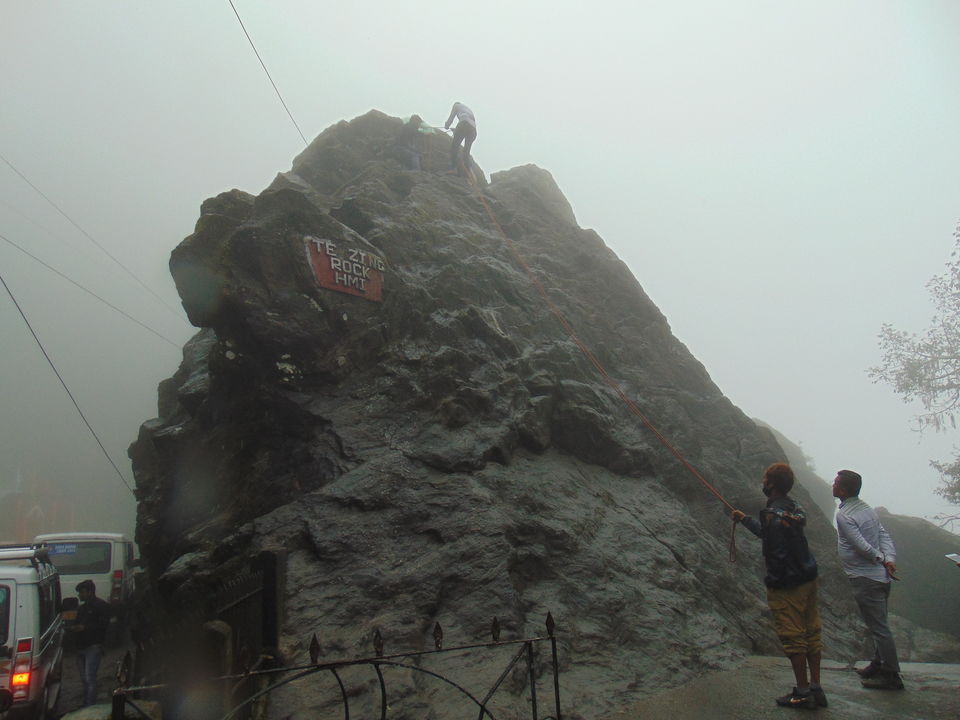

The seven points sound like a lot of places, but the whole tour took around 2.5 hrs, most of which was spent in the zoo. We booked the taxi for the following day to visit the other tourist attractions like the Tiger hill, Batasiya Loop and the Ghum monastery.
Soon we were back to the Mall and had our evening tea at Nathmulls, the famous tea distributer and hangout spot for tea lovers. We tried white tea, which is a very rare and expensive variety (1kg of the tea retails for around Rs. 18,000). We had a glass of it, which cost around 400 bucks. I really liked the presentation. The tea was brought in a pot, and we were asked to take in the aroma, which was truly exquisite. Then the tea was served in champagne flutes. It did not taste extraordinary but the aroma made the pocket pinch worth it.

We had light dinner at a wonderful little offbeat place called Tashi Delek, which is a few minute walk from the main Mall area. The restaurant is small, the decor very ordinary. But the wonton soup and the pork gyathuk are probably two of the most delicious dishes I had in Darjeeling.


Day 3
The next day we woke up to a fog shrouded city. The fog so was thick that it reminded me of the Hollywood movie ‘The Mist’. I half expected to bump into alieny creatures.



Jokes aside, feeling the damp mist on my face was an almost surreal experience. We went exploring the Mahakal temple, which is located a bit on the higher ground. The sound of the temple bells in an atmosphere as this was another rewarding experience.



However, the weather broke around 10:30 and the mist started clearing. We met our driver around that time and set forth for Batasiya Loop, our first stop for the day.
About 20 minutes by car from Darjeeling, Batasiya Loop is basically a circular railway track for the toy train. The railway line is flanked a beautifully decorated garden, and a war memorial. It is an amazing spot for photography. It was raining very hard, so we managed to take very few pictures.
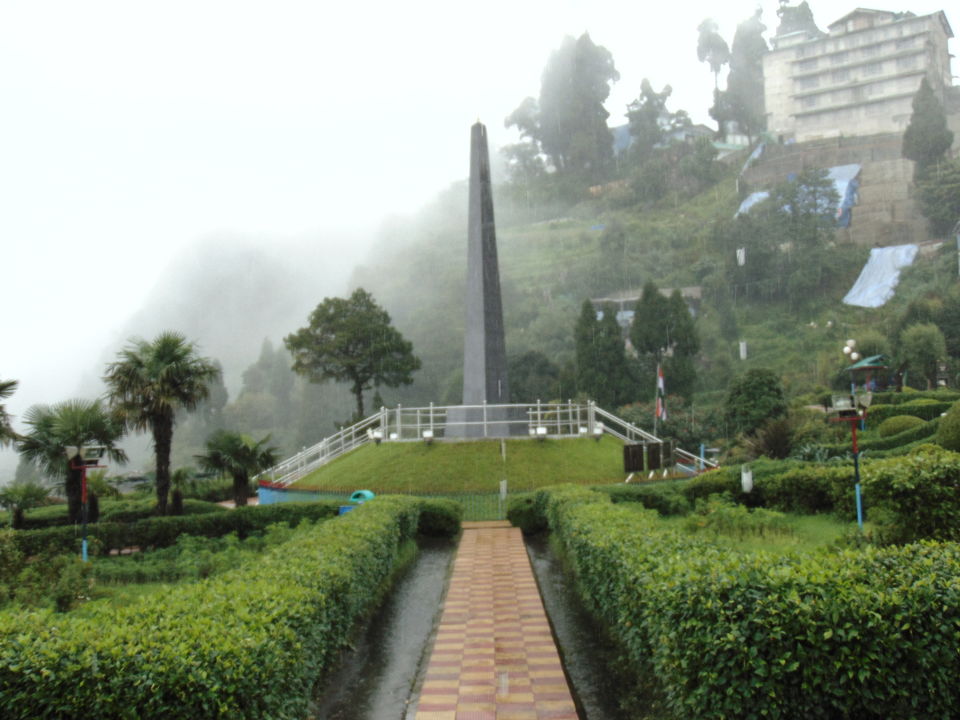


Our next stop was the Ghoom Monastery, which is very close to Batasiya Loop. The rain kept on pouring incessantly, so we could not stay there long or see much.


Last but not the least was Tiger hill. Usually this place is famous as a sunrise point, where people from all over the world gather to watch the riot of colours at the break of dawn. We, however, keeping the bad weather in mind had decided to give the morning trip a miss. It turned out to be a wise decision as the visibility that day remained bad throughout. We could not see even the outline of Kanchenjunga.

Day 4
On our last day, we decided to take a road trip to Mirik, a small town some 2.5 hours away from Darjeeling via car. This was a three-stop trip – the Simana view point, Gopaldhara tea estate and finally Mirik. The day was relatively clear, so we expected to see something more than just the grey clouds.
Simana View Point: As the name suggests, this is a viewing point on the Indo Nepal border. It’s a plateau offering breath-taking view of the mountains. There are some small shops selling mementos and food. It’s a good place to take a tea break and enjoy the nature.




The next stop was the Gopaldhara tea estate. This tea garden is quite big and picturesque. Some sections of the garden are open to tourists, and with some effort you can climb higher take some amazing photos of the surroundings. Bang opposite to the tea garden, there is the Gopaldhara tea stall where you can sample their production. They offer first flush, second flush and other varieties, I don’t quite remember all the names. The tea is served in small glasses and if you are a tea lover, don’t give this place a miss. You can also buy packed tea leaves from the stall. As we had already purchased a whole lot of tea from Nathmulls, we did not get anything from here.






Mirik: The sun had finally peeked from behind the clouds when we reached Mirik. The primary attraction of this town is the lake. Flanked by pine forests, the lake looked almost postcardishly perfect.


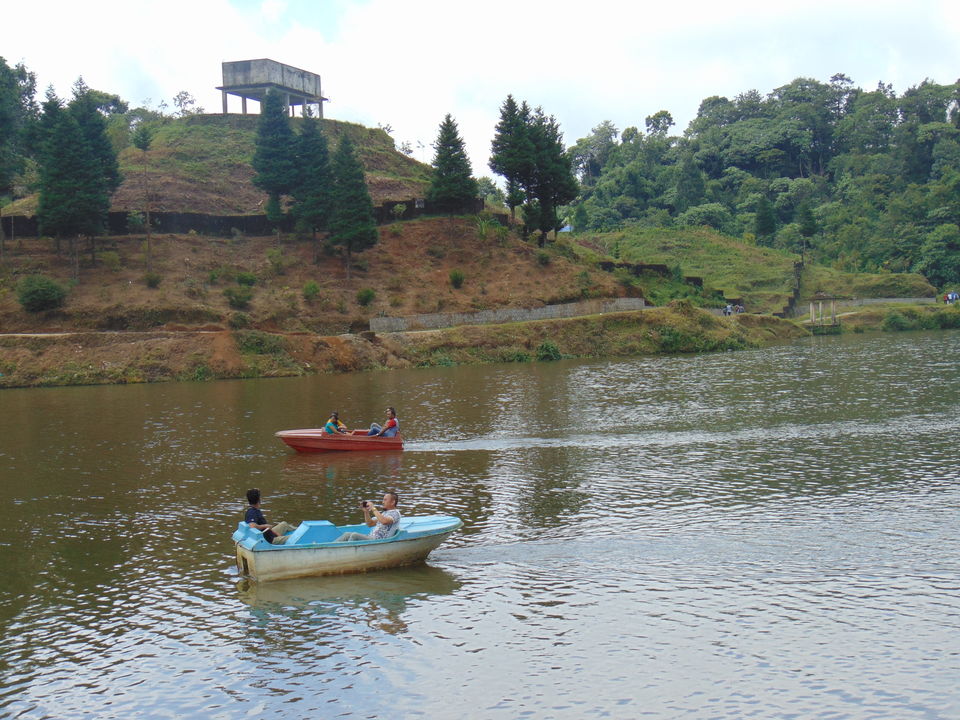



However, the surrounding area is significantly congested with number of hotels, restaurants, car park and shops. There is bridge connecting the two sides of the lake. We did not cross over to the other side, but could see several people opting for horse riding along the lake. We instead went for paddle boating. The lake is huge and it is impossible to cover it entirely. We paddled to the middle and just let the boat float to the breeze. The day was windy, so we easily floated along the tiny waves on the lake.
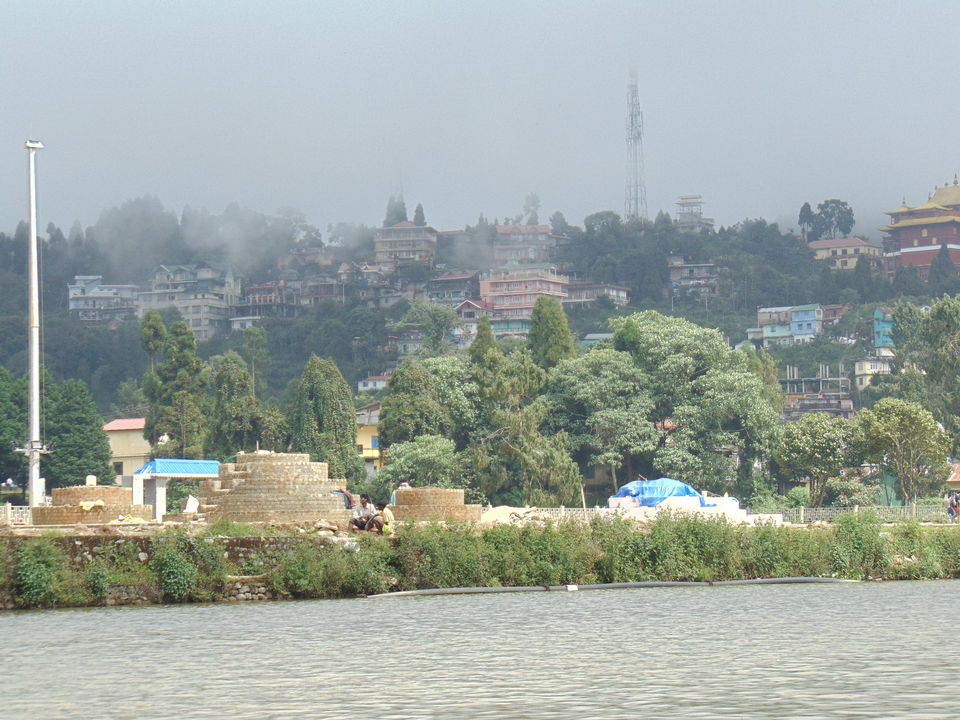

There are quite a number of restaurants just adjacent to the lake that serve a variety of cuisines. But we settled for a simple puri alo lunch and started back for Darjeeling.
Day 5
After constant rains and fog for the last 4 days, Mother Nature decided to bless us with a sunny journey back to NJP. And as a result, we got to see the magnificent Kanchenjunga before we started our journey downhill. The dazzlingly white, majestic mountain range is as beautiful as the pictures promise.

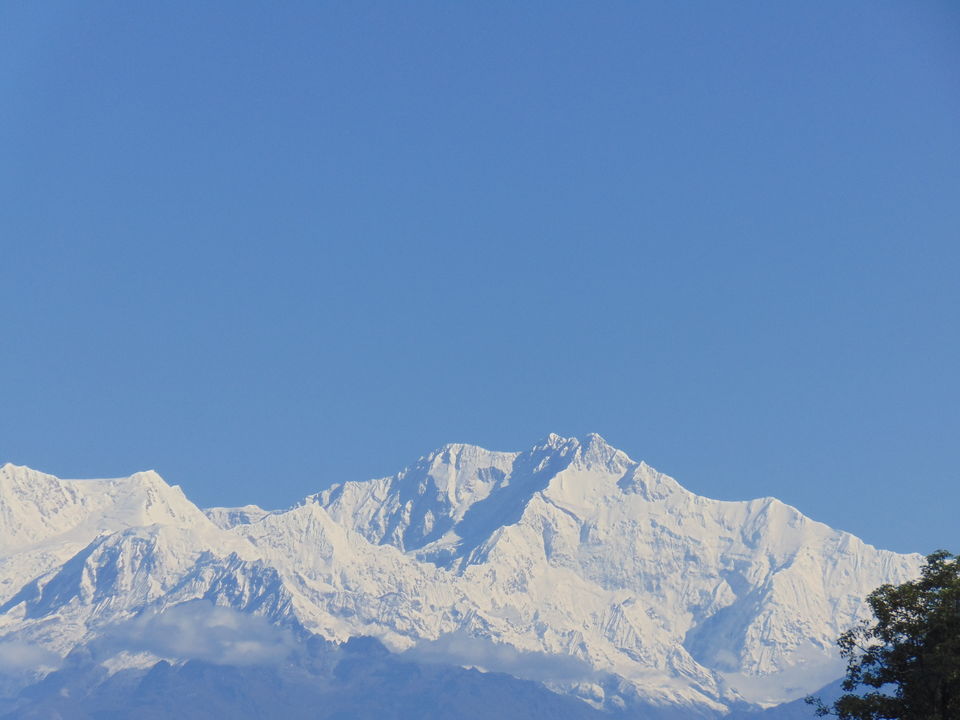

We had the famous pork platter and hot chocolate for breakfast at Keventers soaking in the sunshine and the magnificent view of the Himalayas.




The trip was truly a remarkable one, as we got to experience the beauty of Mother Nature in her various shades.






